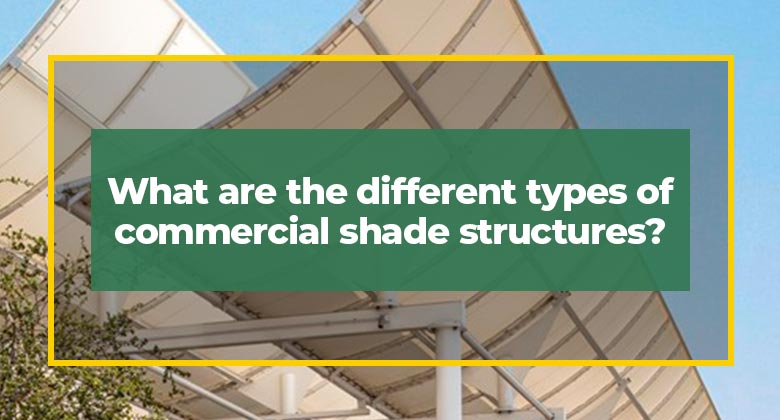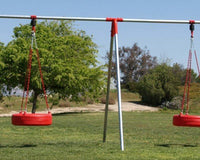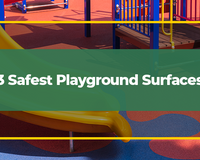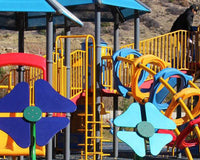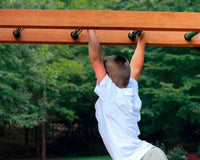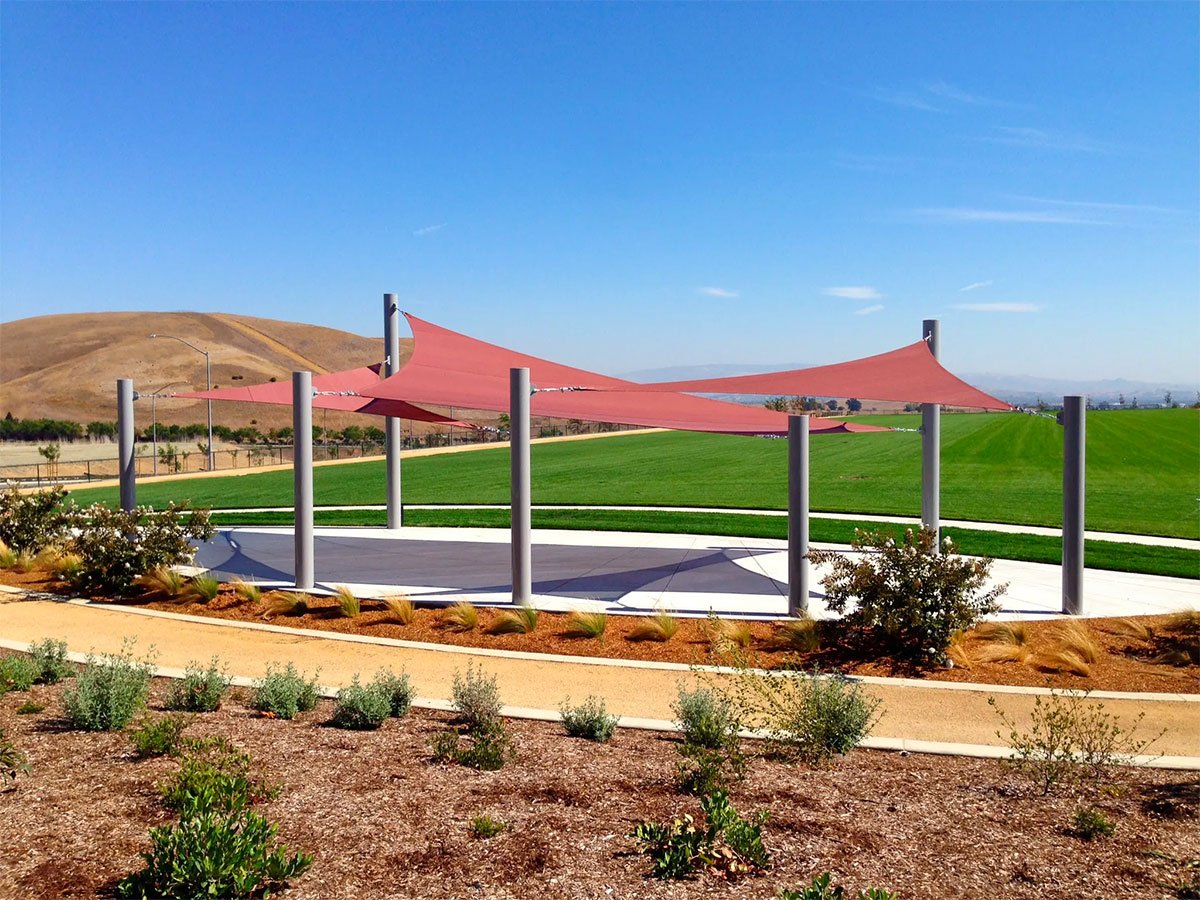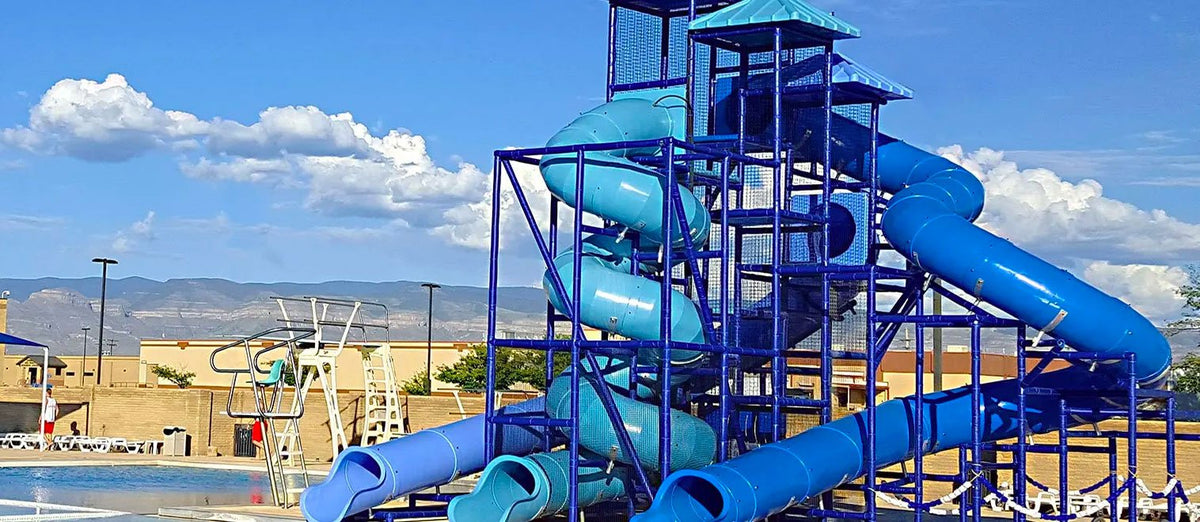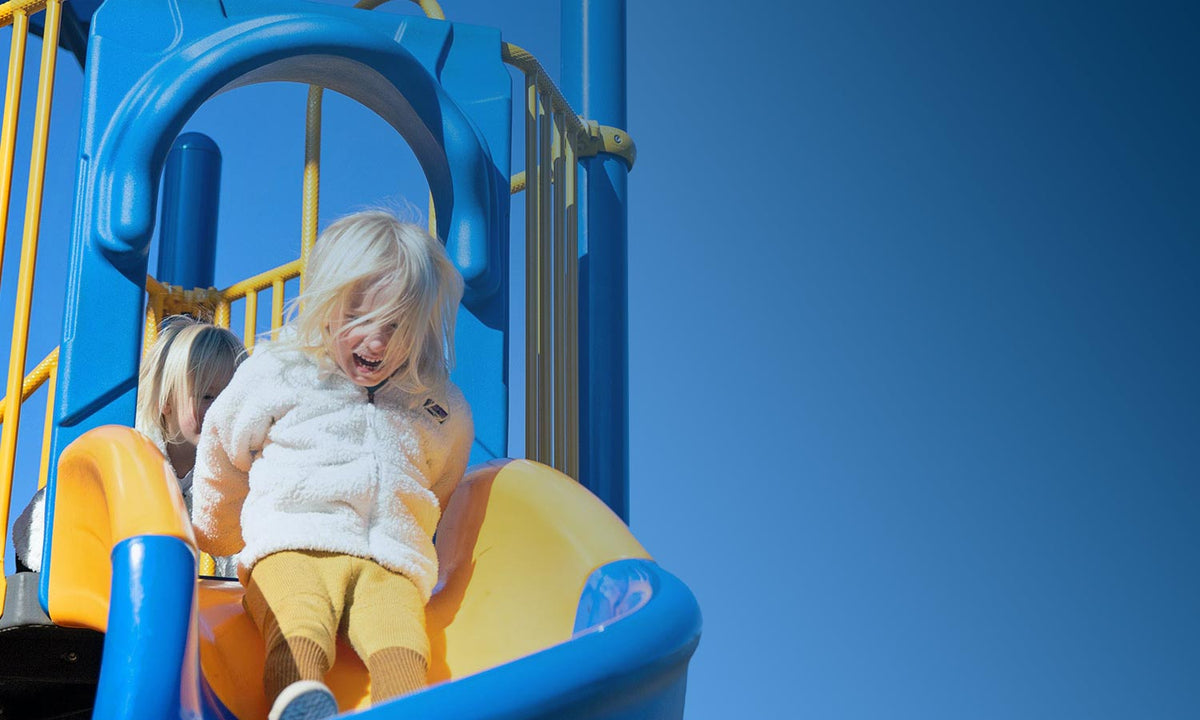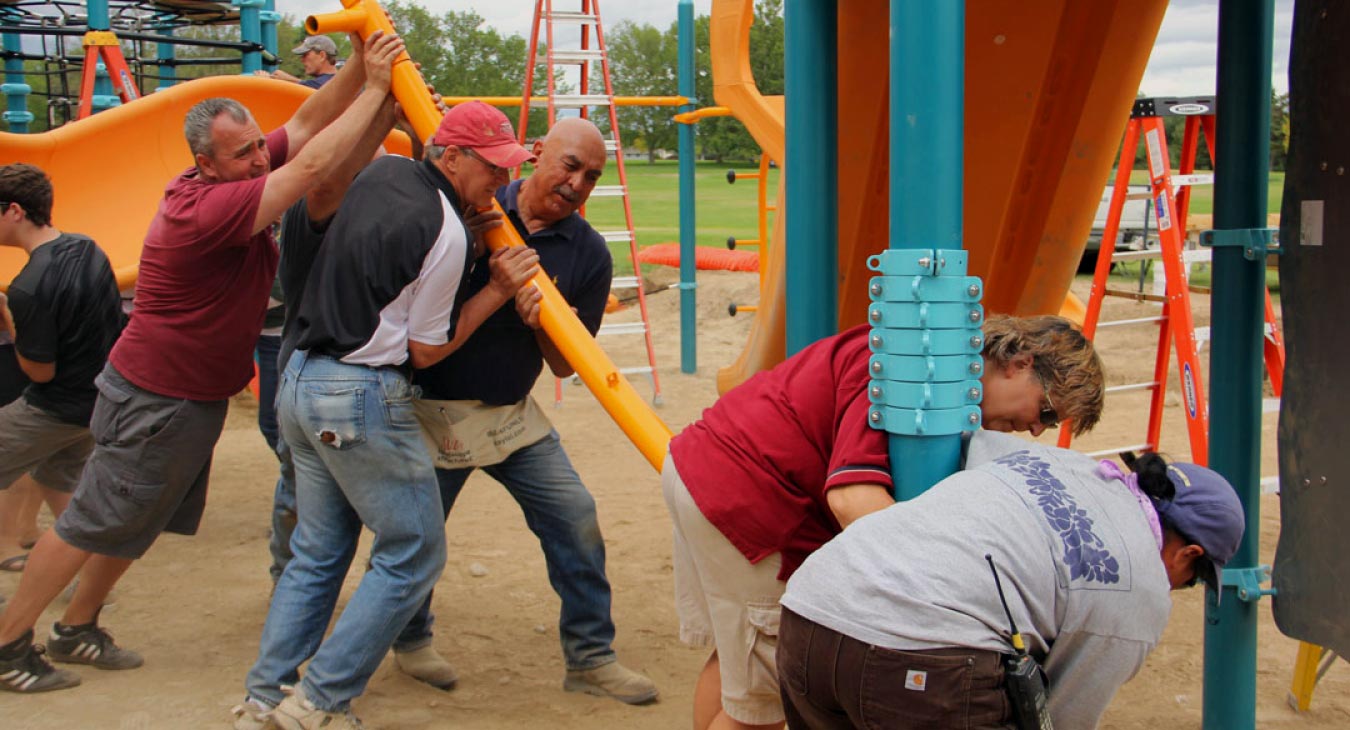When it comes to shade structures, you can find that you’ve got a tons of options at your fingertips. Shades can vary in many ways and you could find yourself wondering why there are so many options and what the advantages are to each.
In this article, we’ll take a deeper dive into a handful of areas to consider when looking at a shade structure. Namely, we will cover the materials used, the shapes available, the roof styles, the post styles, sizing options, colors, other customizations, and the production considerations., and more. Let’s take a deeper dive into the details of some of your choices.
Material
We take a harder look into the different material choices you have when it comes to your shade structure. Specifically, you’ll see what we think about the roof, the posts, and the coating or finishes.
Roofs (Non-porous vs. Fabric)
It is important to decide if you want your shade structure to be porous or non-porous. They are permanent in nature, but they can differ greatly in maintenance and use.
Non-porous permanent structures are generally made with an aluminum or shingled roof. These structures tend to look and feel more substantial. With that said, they also tend to need more maintenance. As roofing materials wear out, they’ll need to be replaced, which may come at the same cost of a total replacement. Additionally, they can trap heat and not allow for air flow.
Fabric structures are more popular for outdoor use. The fabrics are typically made from plastic threads woven into cloth. They stand up to heavy winds and rains, give necessary UV protection for those seeking shade, can easily be power washed, and are easily removed in case a major storm blows through. Fabric commercial shade structures also allow for a cost effective way to form many different shapes and sizes, while non-porous shades can cause large engineering issues with complex designs.
Often each manufacturer has their own fabric. As fabric quality can vary greatly, it is important to learn about each fabric used. UV protection, snow load, wind resistance, mildew resistance, and color fading are all important considerations and vary between fabrics. Also durability and warranty often vary between manufacturers. However, it’s important to remember that proper maintenance and regular cleaning can help extend the lifespan of your shade structure, ensuring it remains effective and visually appealing for years to come, no matter what fabric is used.
Posts
It is also important to consider post material. Steel is the most common post material for shade structures. Wooden poles are an option often used due their lower cost or the aesthetic of the park, but steel is more common. Wooden poles need to be very tall and thick to be effective. Steel poles may be a little more expensive, but they certainly last longer and are more reliable.
Coating and Finishes
For all wood posts, we’d strongly recommend you use pressure-treated wood, stain and sealant to completely finish the structure.
If you decide to go with steel posts, the coating on that steel matters as well. Steel posts are generally either powder-coated or galvanized.
Galvanization is a process where the steel is dipped into a hot bath of chemicals and is typically used to prevent rust. You can read more about the process here. If you’re installing a shade structure near the coast, by a pool, or near sprinklers or misters, you’ll want to strongly consider using galvanized steel. A galvanized finish is the classic silver color you typically see on a chain-link fence.
Powder coating gives the steel color and gloss -- think of it as the paint job typically used for the steel. Also, you can choose to powder coat galvanized or ungalvanized steel for your finish, which we may recommend for locations that are particularly exposed to saltwater and oceans. Most manufacturers default to a powder coat on ungalvanized steel, so you’ll want to make that clear with your supplier.
Finally, a zinc primer is sometimes offered as an extra layer of rust prevention. Again, you’ll want to make clear what you’re looking for with your shade structure supplier.
Shade Structure Shapes
You can get shade structures in so many different shapes nowadays that it feels like the world is your oyster. On top of most generic geometric shapes, you can even customize your structure for a unique design. Most ready-made structures have simple shapes and are great for many uses, depending upon your need.
Rectangles and Squares
As you would suspect, one of the most common shade structure shapes is the rectangle. Rectangular shade structures are great for parks, restaurants, parking spaces, event spaces, and outdoor fields or basketball courts.
The primary reason that the rectangle shade is the workhorse of the shade structure industry is that they are easy to measure, product and install, balancing the number of footers needed with the thickness required of the posts.
Triangle
The Triangle is a very popular choice for sail shades. You’ll see some structures that overlap these shades across many posts, creating architecturally interesting sight lines and a true conversation piece. We will go into more detail around the sail shade below, but take note that triangular sail shades can be much more expensive and aren’t necessarily the best at doing what you need them to do (provide shade).
Multi-sided
Multi-sided refers to structures that have more sides than a square or rectangle. This would be your pentagons, hexagons, and octagons. You can get some that look like oversized umbrellas for poolside shade. Multi-sided is popular among framed structures as well as sails. These structures look great for every venue, especially if your area lends itself towards a circular shape.
Custom
You can always custom design shapes for your structure. Some common designs include circles, animals, flowers, and other fun designs. These are great for areas with a theme, kid play areas, or anywhere that wants to be unique and fun. The customization is almost limitless, don't be afraid to ask for something whacky and interactive for children.
Now that you have landed on a shape, it is time to move on to the next step - style.
Shade Roof Styles
We define the style as the combination of the frame, size, shape, and elevations. There are many different styles of shade structures. While some styles work well in certain applications, others work well in any application. Choosing a style depends on what you like, the amount of space you have, price, and more. It is an important aspect to consider when looking for the right shade structure.
Pyramid
Pyramid style refers to a full-framed structure with the same length and width. The shade is always in the shape of a square and the fabric meets at the top in a point. Pyramids are the most common style of ready made structures, and it is also one of the most popular. It is cost effective, simple, and durable. Pyramids are great for almost any outdoor space.

Hip-joint
Hip-joint is a full framed rectangular shade structure that has a ridge across the top and triangular area on either end of the ridge. A hip roof shade can be either a square or a rectangle. In general, you’ll find that the Hip and Pyramid shapes are the most cost effective shade structures and do a great job lifting air from the shade below to keep folks cool. It’s another very popular option that works well with all outdoor spaces.

Sail
A shade sail is any structure without a steel frame under the fabric, rather the shade is held up by tension or with a cabled. Sail shades are very popular for playgrounds, schools, and large outdoor event spaces.
Cabled sails have multiple wires holding up the fabric and can be channeled in a sleeve sewn into the fabric. Tensioned sails have one long cable holding up the fabric. Tensioned sails need bigger poles to handle the amount of tension pulling on the posts, and these bigger poles increase the cost.
It is worth noting that sail shades depend upon tension and do not have straight lines on the fabric. That curving gives to the shape can cause the structure to not provide as much light as needed.

Multi-panel
Multi-panel structures have more than one piece of fabric and you can take the opportunity to layer different colors! These are usually larger and more complex structures. Multi-panel structures are designed to let some sunlight into the shade area. These are aesthetically interesting and more common at outdoor spaces that want a large, unique, and custom structure.

Multi-level
Multi-level structures have more than one level of fabric. Like multi-panel, multi-level structures give you the ability to use more colors, add interesting shapes and sight lines, and provide great airflow throughout. Often paired with multi-panel designs for intricate and unique structures, you’ll certainly wow your community with this choice. These structures are often reserved for spaces trying to make a statement with their shade.

Arch
For a little variety to your typical rectangle shade, you may want to check out the arch structure. You will find the width of the shade arcs slightly to give another interesting design element.

Shade Post Styles
Cantilever
Cantilever refers to a structure that has only supporting posts from one side that angle over the shaded area. This shade comes with either 1 or 2 posts with extending arms to support the shade fabric and create a roof. They are generally available with rectangle and square shade options. They are ideal for areas with limited access or areas where drilling is not workable, though the posts and footer requirements may be a little beefier. Cantilever support posts are very popular for pools, spectator areas at sporting fields, parking lots, and restaurants.

Winged, Slanted, or Angled
Another take on cantilevered would be to angle the shades up from the center or support posts. This will push the water to run down to only one side, but it will give you another interesting design angle, if that is what you’re looking for.

Single Post
Single post or canopy structures have a single post, and are usually umbrella or pyramid styles. These are very common at pools and outdoor spaces where there is seating for up to 4 people, and they are a very cost effective option. You may also find single-post shades that are also cantilevered over your area.

Hypar
The Hypar structure simply changes the connection points on the sail shade to give the sail some interesting leveling effects and roof lines for what is otherwise a one-cloth sail shade.

Now we can survey the options available to us that extend or dictate the sizes available.
Size and Options
The size of your structure is going to depend on the amount of space you want to shade. If you want to shade a single picnic table, you are not going to need a huge shade structure. If you want to shade a set of bleachers, a 40' structure may be exactly what you need. It is important to know the size, and shape, of the area you want to cover. Most structures come in a variety of sizes, but there are a few unique designs that are not standard. The options below give you a little more flexibility aside from the standard sizes.
Joined
Joined structures combine 2 standard size structures by sharing posts on the skinny side. These are for areas that are long and skinny. Like sports bleachers or walkways.

Double-wide
Double-wide structures are like joined shade structures except they share posts on the wide side. Used for similar purposes as joined, but a different shape.

Extended or Superspan
Extended structures use one piece of fabric to cover the space of a few structures. These are typically used in very large structures.
Superspan structures are any structure with over 40' in length. Due to the length of these structures, it is built with extra posts to support the longer spans. You will commonly find 6-post rectangular superspan shades as the go-to shade structure for outdoor basketball or tennis courts.

When choosing size it is important to know the space you intend to cover. Many of these terms refer to custom design options. Don't think too hard about size unless your space has very uncommon dimensions. The next item to consider is color.
Color
Color is another design option that needs to be considered. If your business has a theme, you'll want to make sure the color of your structure matches. You might want the colors to match your school colors. Note that some colors block out more light than other colors while some colors let out more heat than others. You’ll want to look into these variations as you check out your options.
Shade Structure Footer Options
Footings refer to how the steel poles are affixed to or stand in the ground. There are a few different footing styles to consider for your structure.
Inground Mount
The most common is "pole in hole" or in-ground footing. Depending upon the size of the structure, this is a 6' hole which has rebar and concrete poured in while the pole stands upright over night.
Surface Mount
For pools and other concrete pads where shades will be installed, you’ll likely need a surface plate system. The surface base plate footer employs heavy duty plates and large bolts to fix the shade structure to the concrete pad. You will need quite a thick concrete pad for your bolted area, depending upon the weight and size of the shade structure you need.
Recessed Plate
The third method is "recessed base plate" footing. This is like the pole in hole footer, but the pole connects to a buried concrete footer via a base plate.
Spread Footers
The final footing method is "spread" footing. This method involves a wider and shallower rectangular hole. This method is best where the ground is hard and rocky or sandy, preventing deep holes. It also works well in areas where footings must be dug by hand due to lack of access for larger equipment. The spread method tends to be more labor intensive and expensive.
Other Features
Now you’ve looked through and decided on some of the headline options, be sure to know what other customizations or other options are at your fingertips!
Electrical Access
Some manufacturers provide the ability for electrical provisions. Most do not provide anything with electricity, though it is possible to create the channeling necessary to wire up your shade. This would be useful if you wanted to add lights, water misters, audio speakers, or other wired products to your shade structure posts.
Quick Release
At an additional charge, you can also add a quick release option to many shade structures. This feature allows the owners to take down the sail when there is harsh weather. It is an ideal option for buyers who expect large amounts of snow or very heavy winds. Most manufacturers should give you the wind and snow load to expect from your shade.
UV Protection
Most shade fabrics come standard with some UV protection, after all, it isn’t shade without it. But you may also look for fabrics that have been coated or produced with additional protection, especially if you’re in a setting with very harsh sunlight.
Conclusion
These are all things to keep in mind when looking at shade structures. There is no perfect formula for picking the right structure for you. That is why it is important to define your wants and needs at the beginning of the process. It will help you cut down the number of options and ease the decision making process. Now that you know the different structures out there and all the items to choose from, take a look at our guide on how to choose the right structure for you.


